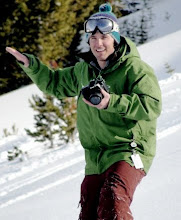"We may apply this construct to our principle that there are two fundamental movements of narrative: a cyclical movement within the order of nature, and a dialectical movement from that order into the apocalyptic world above. [...] There are thus four main types of mythical movement: within romance, within experience, down, and up. The downward movement is the tragic movement [...] The upward movement is the tragic movement [...}" Pg. 161-62
This helps one spacially understand some of Frye's theories, though understanding literature spacially is a trick in itself.
"The complete form of the romance is clearly the successful quest, and such a completed form has three main stages [...] We may call these three stages respectively, using Greek terms, the agon or conflict, the pathos or death-struggle, and the anagnorisis or discovery, the recognition of the hero, who has clearly proved himself to be a hero even if he does not survive the conflict." Pg. 187
Figured these terms might come up on the test so I decided this was important.
"The quest-romance has analogies to both rituals and dreams, and the rituals examined by Frazer and the dreams examined by Jung show the remarkable similarity in form that we should expect of two symbolic structures analogous to the same thing." pg. 193
Appropriate because of our presentations on our critics
"St. George and Una in Spenser are accompanied by a dwarf who carries a bag of 'needments.' He is not a traitor, like the other bag-carrier Judas Iscariot, but he is 'fearful,' and urges retreat when the going is difficult. This dwarf with his needments represents, in the dream world of romance, the shrunken and wizened form of practical waking reality: the more the story, the more important such a figure would become, until, when we reach the opposite pole in Don Quixote, he achieves his apotheosis as Sancho Panza. In other romances we find fools and jesters who are licensed to show fear or make realistic comments, and who provide a localized safety valve for realism without allowing it to disrupt the conventions of romance." pg. 197
Tracing the Theory of Myths through Don Quixote through the very specialized character Sancho.

No comments:
Post a Comment